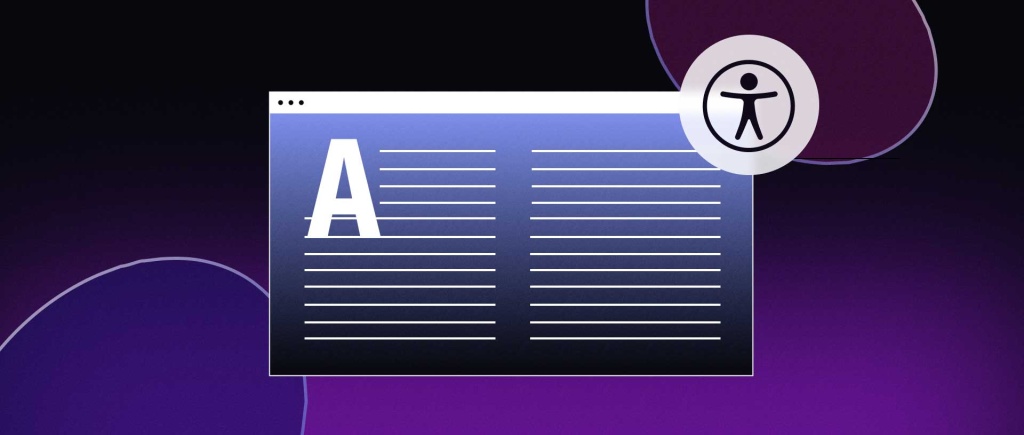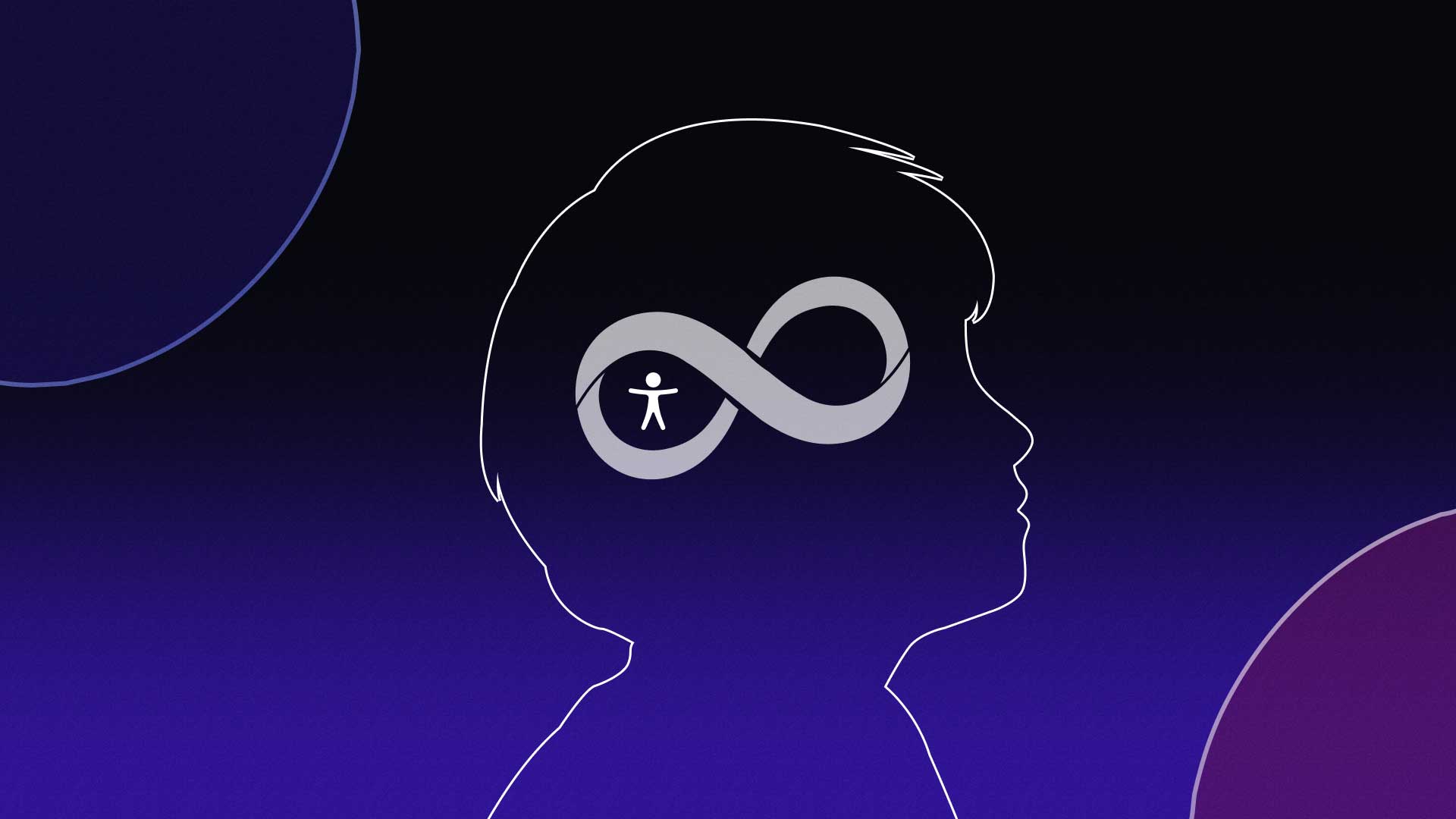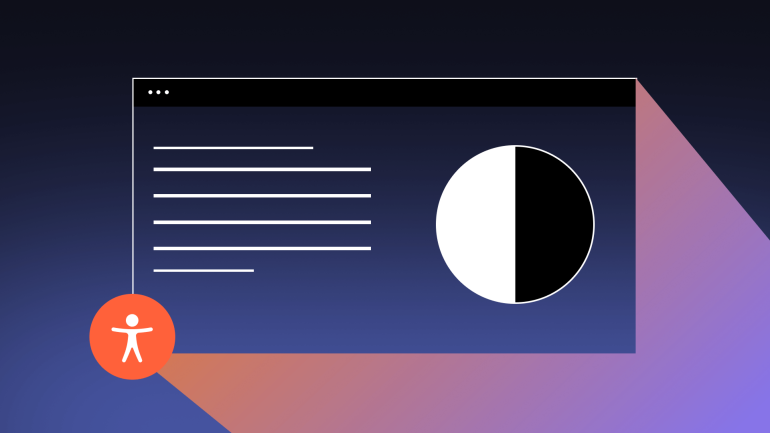Accessibility and inclusion is at the forefront of our ever-changing digital world, bridging the gap between technology and diverse user needs. While the benefits of accessible web design extend to various groups, it’s crucial to address the unique challenges faced by people with autism. Autism Spectrum Disorder (ASD) brings a range of sensitivities and preferences that can greatly impact someone’s online experiences. In this blog, we’ll delve into autism and web accessibility and explore how content creators, designers, and developers can create inclusive digital spaces by designing for autism.
How digital accessibility relates to autism
Digital accessibility involves designing websites and digital content in a way that enables all users–including those with disabilities–to interact, understand, and navigate with ease. It’s a commitment to inclusivity, ensuring that no one is left behind in the digital landscape. For people with autism who experience the world through a unique lens, digital accessibility holds particular importance. Just as physical spaces need to be adapted to accommodate varying sensory experiences, online spaces must also cater to these diverse needs.
Neurodiversity embraces the idea that each individual possesses a distinct brain, with strengths and areas that require support. It challenges the idea of a “normal” brain and advocates for the acceptance and inclusion of people with brain-based disabilities, such as autism, learning disabilities, and mental health conditions. Neurodiversity encourages accommodating differences and fostering potential, rather than seeking to eliminate or “normalize” neurological diversity.
4 barriers and Solutions to accommodate autistic website visitors

To create a more inclusive online space, it’s vital to recognize and address the challenges that individuals on the autism spectrum may encounter. Below, we delve into four common barriers and their solutions to create a better user experience for everyone.
- Sensory Overload
Websites with bright colors, flashing animations, and overwhelming visual clutter can lead to sensory overload for individuals with ASD. Designers can address this with calm color schemes and avoiding animations that could be overstimulating. - Confusing Layouts
Intricate layouts and designs can make it challenging for users with autism to focus on essential content. Simplified and consistent layouts allow for easier navigation and comprehension. - Language Complexity
Complex language and idiomatic expressions can be confusing for individuals with ASD. Designers should embrace plain language and use descriptive buttons, links, and simple sentences to enhance clarity. - Anxiety Triggers
Certain design elements, like intrusive pop-ups or sudden audio, can trigger anxiety. Minimize these elements and offer audio and visual control to the user to create a more comfortable browsing experience.
5 best practices for autism-friendly web design
- Consistency, Consistency, Consistency
People with autism generally thrive with consistency, so unpredictable situations and changes can cause distress. If a page keeps changing layout, options, and colors, these folks may abandon the site and never return. Conversely, if they’re comfortable with a site or resource, they’ll continue coming back. - Color Selection
Choose soothing colors and avoid harsh contrasts. The National Autistic Society notes that ‘low’ and ‘high’ arousal colors impact sensory experiences. Soft colors like pastels can be more calming and reduce the risk of sensory overload. - Clear Language
Write with plain language, avoiding jargon and idioms. Use bullet points, short sentences, and headings to enhance readability and comprehension. - Simple Navigation
Use straightforward navigation with clear labels and a logical hierarchy. This reduces cognitive load and helps users find the information they need easily. - Sensory-Friendly Elements
Use animations and movement sparingly, and allow them to be easily controlled and muted. Avoid patterns and complex background images that could distract or overwhelm autistic visitors.
ASD web tools and resources for accessibility testing
Designers and developers have a variety of tools and services available to test website accessibility. Tools like WAVE can identify potential issues and offer suggestions for improvement. The W3C’s Web Content Accessibility Guidelines (WCAG) provide comprehensive guidance for creating accessible digital content.
“Nothing About Us Without Us” is a common and impactful phrase in the disability community. This means that people with autism should be included in website testing. Autistic people can make decisions about their feelings and preferences, and to truly understand the usability of your site by people with autism, involve them in research and testing.
Shining examples of ASD-inclusive websites
Websites like Autistic Self Advocacy Network and Sesame Street Workshop for Autism have embraced accessibility by incorporating sensory-friendly designs, clear language, and captioned videos. By prioritizing the needs of their neurodivergent audience and their families, they foster a more welcoming online experience.
Debunking misconceptions: accessibility is attainable
It’s a common misconception that designing for accessibility is a cumbersome and expensive endeavor. But there are numerous tools, guidelines, and resources that make the process manageable and inclusion achievable.
Embracing accessibility not only caters to people with disabilities but also improves user experience for everyone. Accessible websites have better SEO, higher user engagement, and increased user satisfaction.
Web accessibility is an ethical imperative. By understanding the unique challenges faced by people on the autism spectrum and implementing thoughtful design practices, we can create a digital world that welcomes and accommodates all users, regardless of their neurodiversity.
FAQs
What is digital accessibility, and why does it matter for businesses?
Digital accessibility refers to designing and developing digital content in a way that ensures equal access for people with disabilities. It matters for businesses because it allows them to reach a wider audience, avoid legal and reputation risks, and foster a more inclusive and positive customer experience. People with disabilities are also a loyal consumer base with trillions of dollars in spending power.
What are examples of assistive technology used by people with autism?
Assistive technology plays a pivotal role in empowering individuals with autism to overcome challenges and engage more effectively with the world around them. Here are several notable example.
Communication Tools: Augmentative and Alternative Communication (AAC) tools like Picture Exchange Communication System (PECS) enable nonverbal or limited verbal people to communicate using images or symbols. Additionally, speech assistive apps on tablets or smartphones provide a digital platform for expressing thoughts and needs.
Enhance Language Processing: For those who experience difficulties in processing spoken and written language, audiobooks and videos are invaluable. These resources can be replayed as many times as needed, promoting better comprehension and retention.
Voice Assistants: Voice assistants like Siri, Alexa, or Google Assistant offer a convenient means of interacting with technology. They are particularly beneficial for individuals with autism who may struggle with fine motor skills or have difficulty typing. Voice assistants can assist with tasks like asking questions, setting alarms, and creating reminders to enhance independence.
Planning and Organization Apps: Many autistic individuals face challenges with executive functioning, such as planning and organizing tasks. Various apps designed for planning and organizing, like visual schedules and task managers, provide structured support. These tools help break down tasks into manageable steps and offer reminders, fostering independence and task completion.
Assistive technology facilitates communication, comprehension, and organization for individuals with autism, ultimately promoting greater autonomy and participation in various aspects of life.


